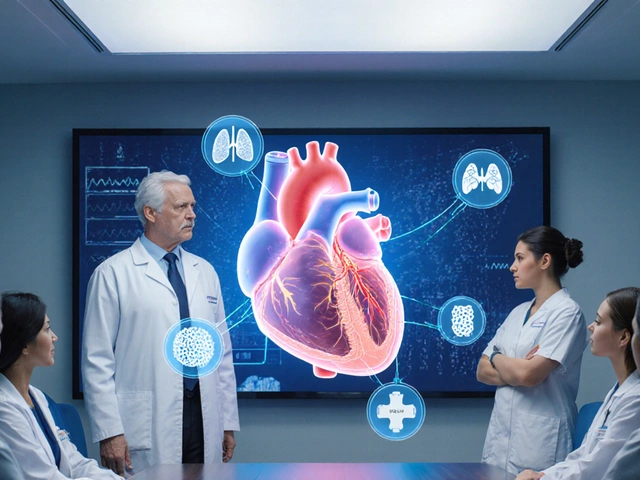If you’re hunting for one “strongest” therapy, here’s the uncomfortable truth: there isn’t a universal winner. Therapy strength depends on the problem you’re treating, how severe it is, and whether you can stick with the work between sessions. The good news? For many issues-anxiety, OCD, PTSD, insomnia, eating disorders-we do have clear front-runners supported by large reviews and clinical guidelines. I’ll show you how to pick them without getting lost in buzzwords.
What “Strongest Therapy” Really Means (TL;DR + Reality Check)
“Strongest” sounds simple, but in mental health it has layers. Here’s the fast answer, then the nuance.
- No single therapy is best for every problem. The right match wins.
- Condition-specific leaders: ERP for OCD, exposure-based therapies and EMDR for PTSD, CBT-I for insomnia, DBT for chronic self-harm, Family-Based Treatment for adolescent anorexia, behavioral activation/CBT for depression, parent training for disruptive behaviors.
- Guidelines matter. Look for therapies recommended by bodies like NICE (UK), APA, VA/DoD (US), WHO. These groups weigh randomized trials and long-term outcomes.
- Fit and follow‑through move the needle. A well-delivered, homework‑heavy therapy often beats a fancy label delivered poorly.
- Combination can be strongest. For moderate-severe depression and some anxiety disorders, therapy plus medication outperforms either alone.
Why this framing? Because the same study methods that test medications also test therapies. Big guideline panels (NICE 2022-2024 updates; VA/DoD PTSD 2023; WHO mhGAP 2023) consistently point to a “best for X” pattern rather than a single champion. When you match the method to the job, you get stronger results.
A Step‑By‑Step Way to Pick the Right Therapy for You
If you want a practical path (not a PhD), use this short playbook. It’s how clinicians and guideline panels think.
- Name the target problem first. What’s the main thing you want to change in the next 8-12 weeks? Panic attacks? Intrusive contamination fears? Waking at 3 a.m.? Binge-purge cycles? Be specific. Therapy works best when it hunts one target at a time.
- Check safety and severity. If there’s active suicidal intent, psychosis, severe substance withdrawal, or medical instability (e.g., very low weight in anorexia), step up care first (emergency evaluation, intensive or inpatient care). The “strongest therapy” is the one you can do safely.
- Match the therapy to the condition. Use first‑line picks from respected guidelines:
- OCD → Exposure and Response Prevention (ERP).
- PTSD → Prolonged Exposure (PE), Cognitive Processing Therapy (CPT), or EMDR.
- Insomnia → Cognitive Behavioral Therapy for Insomnia (CBT‑I).
- Borderline traits or chronic self‑harm → Dialectical Behavior Therapy (DBT).
- Adolescent anorexia → Family‑Based Treatment (FBT).
- Depression → Behavioral Activation (BA) or CBT; combine with medication if moderate-severe.
- Substance use → Contingency Management, Motivational Interviewing + CBT; add meds where indicated (e.g., buprenorphine for OUD).
- Child disruptive behavior → Parent Management Training.
- Check the “fit” box. Ask your therapist about formal training (e.g., ERP for OCD) and how they measure progress. A good sign: they use goals, homework, and rating scales for symptoms.
- Plan the dose. A common effective dose is 8-16 sessions for many CBT‑style therapies; DBT and trauma therapies often need longer. Expect and schedule homework. No practice, no gains.
- Track outcomes every 2-4 weeks. Use brief scales (PHQ‑9 for depression, GAD‑7 for anxiety, PCL‑5 for PTSD, ISI for insomnia, OCI‑R for OCD). If scores don’t budge by session 4-6, tweak the plan: sharpen goals, add exposure, increase intensity, or consider combining with medication.
- Choose delivery that you can stick with. In‑person, video, group, or guided self‑help can all work. CBT‑I via digital programs, ERP groups, and DBT skills groups are legit and often cheaper.
Quick heuristics I use:
- Start with the problem, not the brand name. Treatment should target your top two symptoms.
- If fear/avoidance is the core (panic, phobias, OCD, PTSD), some form of exposure is usually strongest.
- If mood is flat and activity is low, activate first (behavioral activation).
- If sleep is wrecked, fix sleep (CBT‑I) before chasing everything else.
- If crises are frequent, stabilize skills (DBT) before deep dives.

Real‑World Matches: Conditions and Therapies That Work
Here’s a snapshot pulled from big reviews and 2022-2025 guidelines. Numbers are ranges because studies differ; your mileage will vary based on delivery quality and homework.
| Condition | First‑line therapy | Typical outcomes | Notes | Guideline/Source |
|---|---|---|---|---|
| OCD | Exposure and Response Prevention (ERP) | ~60-70% response; significant symptom drop | Often stronger than meds alone; combo helps severe cases | NICE; APA; Cochrane reviews |
| PTSD | PE, CPT, or EMDR | ~50-60% loss of PTSD diagnosis; large symptom gains | VA/DoD prioritizes trauma‑focused therapies | VA/DoD 2023; NICE |
| Insomnia | CBT‑I | 70-80% improve; large effect on sleep latency and quality | Outperforms sleep meds long‑term | ACP; AASM; Cochrane |
| Borderline traits / chronic self‑harm | Dialectical Behavior Therapy (DBT) | ~50%+ reductions in self‑harm and ER use in RCTs | Skills groups + coaching boost gains | APA; NICE |
| Adolescent anorexia | Family‑Based Treatment (FBT) | Higher remission and weight restoration vs. individual therapy | Parents lead re‑feeding with team support | NICE; Academy for Eating Disorders |
| Major depression | Behavioral Activation or CBT | Moderate effects; combo with meds best for moderate-severe | Early activation predicts success | NICE 2022; APA |
| Generalized anxiety & panic | CBT with exposure/interoceptive exposure | Moderate-large effects; relapse prevention matters | Breathing retraining isn’t enough; exposure is key | NICE; Cochrane |
| Substance use disorders | Contingency Management; MI + CBT | 2-3× higher odds of abstinence with CM | Add meds when indicated (e.g., OUD) | WHO; SAMHSA; Cochrane |
| Child disruptive behaviors | Parent Management Training | Meaningful reductions in aggression/opposition | Coaching parents is the lever | NICE; CDC; Cochrane |
| Couple distress | Emotionally Focused Therapy (EFT) | ~70-75% recovery in some trials | Best when both partners engage | ICEEFT‑summarized RCTs; APA |
| Chronic pain | CBT/Acceptance & Commitment Therapy (ACT) | Small-moderate improvements in function and mood | Pair with physical rehab | Cochrane; NICE |
A few clarifiers from 2024-2025 guidance:
- ERP for OCD stays top pick. Many people also benefit from SSRIs; the combination can help when symptoms are severe or ERP isn’t enough.
- PTSD guidelines still rank PE, CPT, and EMDR ahead of meds. Prazosin helps nightmares; SSRIs help some, but trauma‑focused therapy drives bigger PTSD symptom change.
- Insomnia: CBT‑I remains first‑line across major sleep bodies. Digital CBT‑I can work when you can’t access a therapist.
- Depression: for moderate-severe cases, combined therapy + antidepressants often beats either alone. Behavioral Activation matches CBT in many trials and is simpler to learn.
- Substance use: Contingency Management has some of the most reliable effects yet is underused. If you have access, it’s powerful.
What about hot topics?
- Ketamine/esketamine: Esketamine is FDA‑approved for treatment‑resistant depression and can reduce suicidal thinking fast. It’s not a stand‑alone cure; pairing it with structured therapy and follow‑up gives it a role, not a crown.
- Psychedelic‑assisted therapy: As of 2025, MDMA‑assisted therapy for PTSD has not received broad FDA approval; research continues. It’s not first‑line in guidelines.
- Virtual vs. in‑person: For CBT‑style work (including ERP and CBT‑I), telehealth is often as effective if you stick with the homework.
Cheat Sheets, Pitfalls, and Mini‑FAQ
Here’s the part you can screenshot and use.
Quick decision grid
- If your main problem is fear/avoidance (panic, phobia, OCD, PTSD): choose a therapy with exposure. Ask, “What exposures will we do by session 2-3?”
- If your main problem is low mood + low activity: start Behavioral Activation or CBT. Ask, “What weekly actions will we schedule and measure?”
- If your main problem is sleep: do CBT‑I. Ask, “Will we set a sleep window and track it daily?”
- If your main problem is self‑harm/emotional storms: start DBT. Ask, “When do we learn distress tolerance and emotion regulation skills?”
- If your teen’s main problem is restrictive eating: seek FBT. Ask, “Are you trained in FBT for adolescents?”
First session checklist
- Diagnosis or working hypothesis is clear.
- Goals are concrete: “Fewer than 1 panic attack a week,” “30 minutes to fall asleep,” “Wash hands ≤ 8 times/day.”
- You agree on a plan: session count, homework, and measures.
- You feel safe enough to be honest. A 7/10 “fit” or better is a good start.
Homework that actually moves outcomes
- ERP: daily exposures with time and ritual‑resistance logged.
- PTSD (PE/CPT): written accounts or cognitive worksheets plus real‑world exposures.
- CBT‑I: sleep window, consistent wake time, stimulus control rules.
- BA/CBT: activity scheduling with mood ratings; thinking traps logged.
- DBT: diary card, skills practice (TIP, opposite action, validation scripts).
Common pitfalls to avoid
- Shopping by brand, not match. A great therapist doing the wrong method for your problem won’t beat a well‑matched plan.
- Skipping exposure. For OCD, PTSD, and many anxieties, exposure is the active ingredient. Education without exposure rarely sticks.
- Under‑dosing. One session every few weeks with no homework is like doing one push‑up and expecting abs.
- Ignoring comorbidities. If alcohol use is high, treat it alongside anxiety; if ADHD is unmanaged, address it to boost therapy follow‑through.
Mini‑FAQ
- Is therapy or medication stronger? Depends on the condition. For PTSD, OCD, insomnia, and many phobias-therapy often outperforms meds long‑term. For moderate-severe depression and some anxieties, combining meds with therapy is strongest.
- How many sessions until I feel different? Many people notice change by sessions 3-6 if homework is on point. Meaningful outcomes often need 8-16 sessions; DBT and trauma work can take longer.
- Can online therapy match in‑person? For structured work like CBT, ERP, and CBT‑I, yes-if you practice between sessions. For severe, complex cases, hybrid or in‑person can help.
- What if I’ve tried CBT and it “didn’t work”? Check if it included the active ingredients (exposure, behavioral activation, cognitive work) and homework. If yes, consider intensity (twice weekly), switching to a closer match (e.g., ERP for OCD), or adding meds.
- Is hypnotherapy the strongest? Not for most conditions in major guidelines. Some people find it helpful, but it’s not a first‑line for OCD, PTSD, depression, or insomnia.
- How do I verify a therapist’s training? Ask what model they use, where they trained, how they measure progress, and what a typical session looks like. Specific answers beat jargon.
Next steps
- Write your top problem and one measurable goal (“Sleep 7 hours with ≤30 mins awake at night”).
- Pick the matching modality from the table above.
- Contact two therapists and ask three questions: training in that modality, how they measure progress, and what homework you’ll do by week two.
- Commit to 6 sessions and daily practice. Re‑score symptoms at week 4. If there’s no movement, adjust the plan or combine treatments.
One last anchor: the strongest therapy is the one that targets the right mechanism and that you can practice consistently. That’s not a slogan-it’s how trials win. If you remember nothing else, look for a match, a plan, and measures. That’s the recipe most likely to help you now.
P.S. If you’re weighing options, a good simple phrase to search is evidence-based psychotherapy plus your condition (like “ERP for OCD” or “CBT‑I for insomnia”). It’ll steer you toward methods that hold up in the data, not just marketing.






